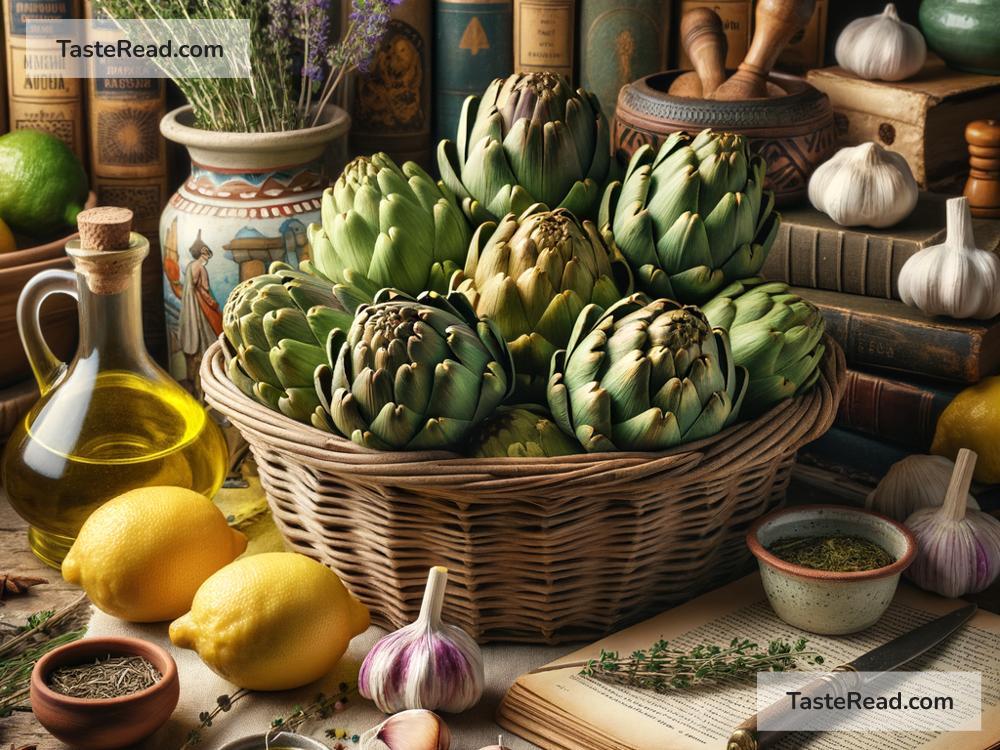The Fascinating History of Artichokes in Mediterranean Diets
Artichokes, with their unusual shape and intriguing taste, hold a special place in Mediterranean cuisine. From ancient times to modern kitchens, this unique vegetable has been a staple in the region’s diets and cultures. But where did it come from? And how did it become such an iconic food? Let’s explore the fascinating history of artichokes and their role in Mediterranean diets.
The Origins of the Artichoke
The story of the artichoke begins in the Mediterranean region thousands of years ago. Its ancestor, the wild cardoon, grew naturally in areas like North Africa, southern Europe, and parts of the Middle East. The wild cardoon resembled the artichoke we know today but was even more rugged and challenging to eat.
Historians believe that people began cultivating cardoons around the 8th century BCE. Thousands of years later, these plants were refined through careful farming to create the tender and edible artichoke we enjoy today. The name “artichoke” is thought to come from the Arabic word al-khurshuf, which later evolved into the Italian articiocco and the English artichoke. This name hints at the vegetable’s movement through various regions and cultures.
Ancient Popularity: A Food Fit for Royalty
Artichokes were highly valued in ancient times—not just for their flavor, but also for their medicinal properties. In Ancient Greece and Rome, the vegetable was admired for its ability to improve digestion and liver health. Greeks prized the artichoke for its supposed ability to enhance beauty, while Romans considered it a luxury food, enjoyed only by elites and royalty.
Roman texts and illustrations feature artichokes as symbols of wealth. They were often prepared with herbs like mint and cumin and served during feasts, alongside other lavish foods. Roman emperor Nero was rumored to be so fond of artichokes that he brought them into his palace’s gardens to ensure he always had a fresh supply.
By the Middle Ages, artichokes continued to carry their reputation as a food for the rich. They were expensive to grow and harvest, as the plant’s edible heart had to be carefully cleaned and prepared. Kings and nobles from across Europe paid high prices to enjoy artichokes during banquets.
The Renaissance: Artichokes on the Move
During the Renaissance period (roughly the 14th–17th centuries), artichokes became even more popular across Europe. Their journey was shaped by trade and exploration. Italian traders often carried artichokes with them, introducing them to regions like France and Spain.
Catherine de’ Medici, the Italian noblewoman who married King Henry II of France, famously loved artichokes. She brought the vegetable to French cuisine, where it soon became a staple in royal meals. The French admired its elegant shape and refined taste, incorporating it into complex recipes that emphasized innovation in cooking.
Meanwhile, in Spain, artichokes were brought by the Moors during their rule. Spanish farmers began to cultivate them extensively, establishing the vegetable within their agricultural traditions. Today, Spain remains one of the top producers of artichokes globally.
Artichokes and Mediterranean Cuisine
In Mediterranean diets, artichokes have always played an important role. The region’s cuisine celebrates fresh, seasonal, and flavorful ingredients, and artichokes fit perfectly into this approach. They are incredibly versatile and can be stuffed, grilled, roasted, boiled, or turned into dips and sauces.
Each country in the Mediterranean has its own way of enjoying artichokes:
-
Italy: Italians love their carciofi, which are cooked in a variety of ways. One popular dish is carciofi alla romana, where artichoke hearts are stuffed with garlic, mint, and breadcrumbs, then braised in olive oil. Italians also make artichoke pizza and use them as a topping for pasta.
-
Spain: In Spain, artichokes are often roasted or fried, creating crispy and flavorful dishes. A favorite is alcachofas con jamón—artichokes cooked with cured Spanish ham.
-
Greece: The Greeks enjoy artichokes in stews and casseroles, combining them with peas, potatoes, lemon juice, and olive oil. They often pair artichokes with lamb or fish in hearty dishes.
-
North Africa: In countries like Morocco and Tunisia, artichokes are added to savory tagines—a traditional slow-cooked stew—with spiced meat and vegetables.
Modern Love for Artichokes
Today, artichokes are loved not just in the Mediterranean but around the world. They are celebrated for their unique flavor, health benefits, and ability to elevate any dish. Artichokes are rich in antioxidants, fiber, and vitamins, making them a healthy choice for modern diets.
California, in the United States, has become a major producer of artichokes outside of the Mediterranean region. In fact, Castroville, California, calls itself the “Artichoke Center of the World,” hosting an annual artichoke festival.
However, the vegetable’s heart and soul remain in Mediterranean cuisine. Traditional recipes and farming methods have kept artichokes deeply tied to their origins. Every bite brings a taste of history, culture, and the sun-soaked Mediterranean landscape.
Conclusion
The artichoke’s journey from wild cardoon to beloved Mediterranean staple is truly fascinating. Its history spans thousands of years and touches many cultures, from Ancient Rome to Renaissance Italy and beyond. Whether you enjoy it grilled, stuffed, or simmered in a stew, the artichoke connects us to a rich culinary tradition that celebrates flavor, health, and creativity.
So, the next time you savor an artichoke, take a moment to appreciate its amazing history and its enduring role in Mediterranean diets. This humble yet extraordinary vegetable is truly a gift from the past to our plates today!


